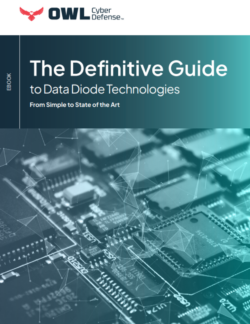
What is a Data Diode?
Technology networks within critical infrastructure, the government, and commercial businesses form the backbone of developed nations. As the modern world continues to be more data driven and interconnected, these networks — from enterprise scale all the way down to smaller office and home networks — become more efficient, intelligent, and unfortunately, vulnerable. From industrial control system monitoring and CCTV feeds to laptops and intelligent home appliances, every new network connection introduces a new vector for cyberattack, and the surface area for such vulnerabilities has exploded in recent years. As such, there is a pressing, global need for more effective tools to combat cyber threats and protect these networks from attacks that might cause severe financial, physical, or personal damage.
Best practices for protecting these networks involve simplifying, reducing, and isolating network connections, including segmenting networks from one another by creating either a virtual or physical separation between them. However, physical or virtual separation can prevent information and data from getting to authorized users, and these networks often contain a wealth of information that is far too valuable to simply cut off. The traditional security challenge has been how to limit access, minimize risk, and keep these networks secure while getting valuable operational data to authorized users when it’s needed.
One-way data transfer systems, generically called “data diodes,” were designed specifically to address this security problem by providing a hardened network defense while also securely sharing data. Data diodes isolate and protect networks from external cyber threats, while allowing these networks to import or export data in a highly controlled, deterministic manner. This can involve anything from Supervisory Control and Data Acquisition (SCADA) systems generating data in a nuclear power plant to transaction data created at a bank’s ATMs.
Please complete the form below to download the full ebook:
